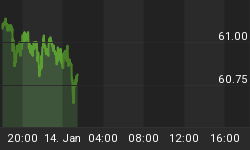Despite the ongoing stock market rally, we remain steadfast in our view that this continues to be one of the greatest bear market rallies of all time. The most common arguments for continuing to invest in stocks are that the economy is exhibiting growth without inflation ("goldilocks") or that the Federal Reserve will destroy the purchasing power of the US Dollar ("cash is trash"). While these notions contradict one another, if either is true, buying stocks would be justified. However, we argue that this is simply a bear market rally which is extremely overextended.
Goldilocks Is Highly Improbable
A goldilocks scenario consists of economic growth coupled with low inflation. Thus far, economic growth has been insufficient to justify the current move in stock prices. David Rosenberg of Gluskin Sheff recently compared the current economic recovery with a typical economic recovery. He writes that if this were a normal cycle, then:
- Employment would already be at a new high, not 8.4 million shy of the old peak
- The level of real GDP would already be at a new cycle high, not almost 2% below the old peak
- Consumer confidence would be closer to 100 than 50
- Bank credit would be expanding at a 14% annual rate, not contracting by that pace
- The Fed would certainly not have a $2.3 trillion balance sheet
- And, the government deficit would not be running in excess of 10% of GDP or twice the ratio that FDR ever dared to run in the 1930s
Further, congressional approval ratings (Figure 1) are near all-time lows - nearly matching the record low registered in 2008. Such a low level adds doubt to economic growth projections because congressional approval ratings are closely correlated with the stock market, the economy and overall social mood.
Figure 1. Congressional Approval
Considering the weakness of the so-called economic recovery, goldilocks is already highly questionable. Additionally, the prospect of low inflation during a real recovery is even more uncertain. While some investors predict that inflation will remain subdued because of low capacity utilization and high unemployment, we believe that type of recovery discredits goldilocks. Secondly, even if a recovery becomes self-sustaining, the surge of the monetary base will undoubtedly lead to, at the very least, above-average inflation.
Figure 2. Monetary Base
Source: St. Louis Federal Reserve
Is Cash Trash?
In a cash is trash scenario, investors seek to hedge against the loss of a currency's purchasing power by buying real assets and selling fixed income assets that do not compensate for a loss in purchasing power. Some investors may argue that stocks are a safer investment than cash because interest rates are at 0%, the Federal Reserve is openly willing to print money, and the US is running tremendous fiscal deficits. Perhaps this is the reason that mutual funds' cash position is at the lowest level since each of the last two stock market peaks (Figure 3). However, while one perspective is that mutual funds have efficiently allocated their cash into equities to preserve purchasing power, other indicators such as gold and US Government bond yields are nowhere near pricing in that scenario today.
Despite rising for ten straight years, gold at $1,100 is just $250 higher than its 1980 peak and is less than $100 higher than its March 2008 peak. Meanwhile, the 10- and 30-year US Treasury rates are currently yielding approximately 3.85% and 4.75%, respectively. The price of gold and the low yields on government securities are astonishing in light of the growth in the monetary base and the US Government's deficit, suggesting that the Federal Reserve has not printed enough money to offset the credit deleveraging of the private sector. If so, further deleveraging will place pressure on equities at some point, sooner rather than later, in the future.
Figure 3. Mutual Funds' Cash Level
Source: Elliott Wave
Investor Pessimism
In addition to weak economic fundamentals, the current low level of investor pessimism (Figure 4) also suggests that equity markets are nearing a high. When investor pessimism nears 22-25% in the AAII survey, markets typically correct shortly thereafter. As the figure shows, pessimism is on the verge of hitting cycle lows not seen since 2007.
Figure 4. Investor Pessimism
Source: Elliott Wave
Conclusion
The rally in stock prices has now lasted for just over a year and investors are as invested and optimistic as they have been at prior stock market peaks. In order to invest at today's prices, one should be certain that there is in fact an economic recovery or that the Federal Reserve will destroy the purchasing power of the US Dollar. To date, weak economic activity relative to past recoveries and non-confirming signals from gold and the treasury market suggest that neither goldilocks nor a devalued currency is driving stocks higher. Therefore, the equity market rally is based upon false hopes.
















